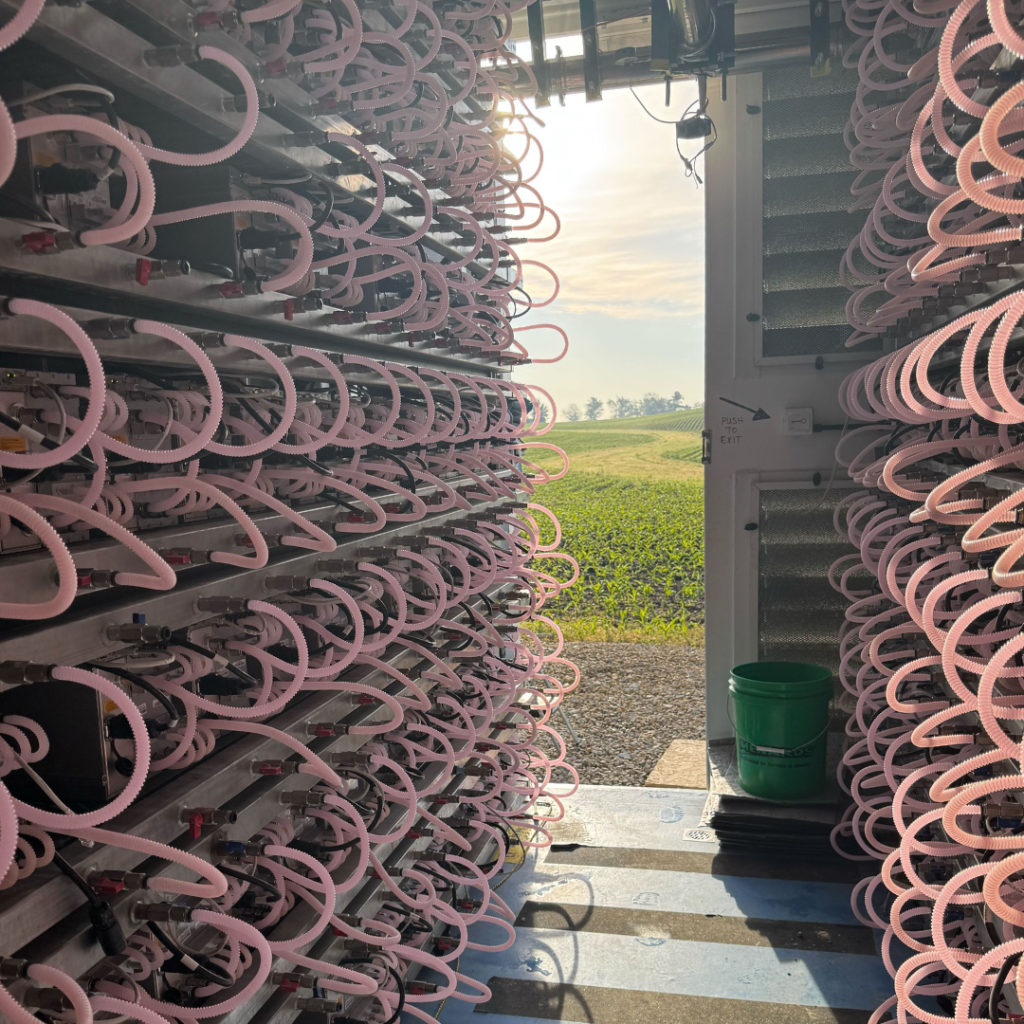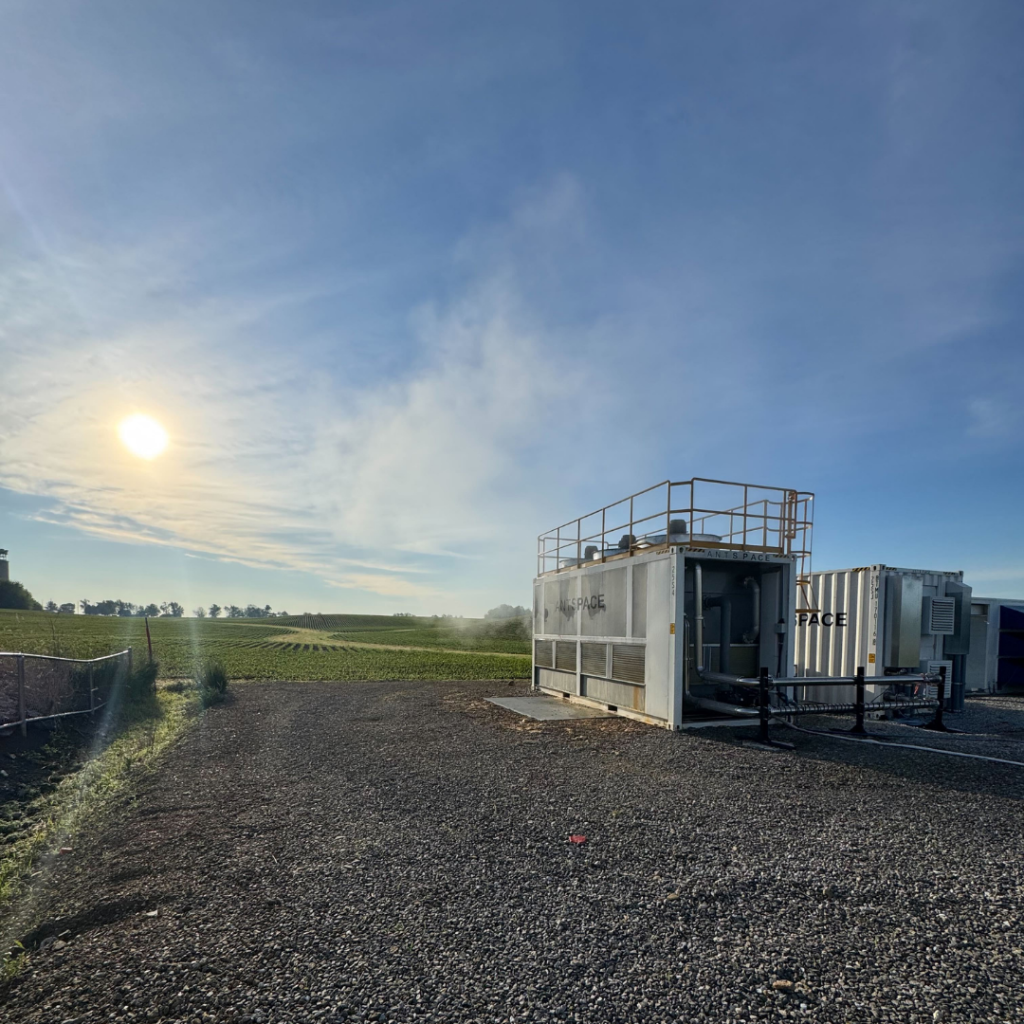Used Hydro Miner Problems?
Common Problems When Purchasing Used or Older Hydro Bitcoin MiningUnits
Common Problems When Purchasing Used or Older Hydro Bitcoin Mining Units
When acquiring pre-owned hydro Bitcoin mining equipment, technicians must be vigilant about several critical issues that could lead to costly downtime and hardware failures. Here’s what you need to know before committing to used hydro units:
Hidden Hydraulic System Damage
Water Damage and Freezing Issues
- Freeze Damage: Units previously exposed to freezing temperatures (-17°C and below) often have hidden cracks in hydro boards and connectors. These develop when residual water expands during freezing cycles.
- Improper Draining: Many sellers fail to properly drain systems before storage or transport. Look for bulging in brazing areas and cracked connectors-telltale signs of freeze-thaw damage.
Corrosion and Mineral Buildup
- Improper Coolant Use: Many operators use tap water instead of recommended antifreeze solutions, leading to internal corrosion and scale buildup.
- Cooling Efficiency Loss: Mineral deposits can reduce cooling efficiency by 20-30%, causing ASICs to throttle performance or fail prematurely.
Component Failures to Watch For
Pump Degradation
- Wear From Suspended Solids: Mining pump failures commonly stem from abrasive particles in the cooling system. Inspect impellers for pitting or unusual wear patterns.
- Overheating Damage: Check for discoloration around pump housings, indicating the unit has run dry or overheated.
Power Supply and Electrical Issues
- Cord Damage: Examine power cords carefully for cuts, abrasions, or improper repairs. Water ingress through damaged cords is a leading cause of electrical failures.
- PSU Errors: Test power supply units thoroughly, as they are often the first component to degrade in older systems.
Warranty and Support Concerns
Voided Warranties
- Unauthorized Modifications: Many used units have been modified, automatically voiding manufacturer warranties.
- Improper Maintenance Records: Without proper documentation of maintenance history, you cannot verify if the unit was properly serviced.
Obsolete Components
- Discontinued Parts: Older hydro Bitcoin mining units (pre-2023 models) often use components no longer manufactured, making repairs nearly impossible.
- Firmware Support: Manufacturers typically stop releasing firmware updates for older models, leaving security and performance vulnerabilities unaddressed.
Pre-Purchase Inspection Checklist
Physical Inspection
- Hydro Board Examination: Look for leakage points, bulging in brazing areas, and connector integrity.
- Coolant System Test: Pressure test the cooling system to identify potential leaks (should hold 4 bar for testing).
- Filter Condition: Inspect filters for excessive buildup indicating poor maintenance.
Performance Verification
- Hashrate Testing: Run the unit for 24 – 48 hours to verify stable hashrate without thermal throttling.
- Temperature Monitoring: Monitor coolant temperature differentials to verify proper heat exchange.
- Network Connectivity: Test for stable network connection without intermittent failures.


Documentation Requirements
- Request maintenance logs showing regular coolant changes and system flushes.
- Verify original purchase date and any remaining transferable warranty.
- Check serial numbers against manufacturer databases for authenticity.
Best Practices for Purchasing
- Always test before buying, never purchase sight unseen.
- Factor in 15-20% of purchase price for immediate maintenance and repairs.
- Purchase from reputable mining operations with documented maintenance practices.
- Consider third-party inspection for large purchases or remote transactions.
By conducting thorough due diligence, you can avoid the common pitfalls of purchasing used hydro mining equipment and protect your operation from unexpected downtime and costs.
If you feel overwhelmed by Used Hydro Bitcoin mining Unit Inspections, our specialists have years of experience assessing and optimizing hydro mining setups. Let us help you verify unit condition, understand potential issues, and ensure a smooth, profitable start.
Key factors to consider when inspecting pre-owned hydro units
When inspecting pre-owned hydro Bitcoin mining units, key factors to consider include a thorough evaluation of mechanical, hydraulic, and electrical systems to ensure safe, reliable, and efficient operation. Based on industry guidelines for hydropower equipment condition assessment and commissioning, the critical inspection points are:
1. Mechanical Condition
Physical Inspection:
- Check for visible damage such as cracks, corrosion, wear, or deformation on structural components including turbines, shafts, bearings, and casings.
- Inspect seals, gaskets, and joints for leaks or deterioration.
- Verify alignment of shafts and couplings to prevent vibration and premature wear.
Hydrostatic Testing:
- Perform pressure tests on all pressurized fluid systems (penstocks, pipelines, cooling circuits) to detect leaks or weaknesses.
- Ensure that valves, gates, and auxiliary equipment operate smoothly without obstruction.
Bearing and Lubrication:
- Review bearing temperature records and inspect lubrication systems for proper oil levels and contamination.
Vibration and Noise:
- Monitor for abnormal vibrations or unusual noises during dry and wet tests, which may indicate mechanical faults.
2. Hydraulic System Integrity
Flow and Pressure Checks:
- Confirm proper flow rates and pressure levels in cooling and lubrication circuits, including pumps and strainers.
- Verify operation of pressure switches, flow sensors, and valves.
Water Quality and Corrosion:
- Assess water quality to prevent corrosion and scaling inside pipes and cooling systems.
- Look for mineral buildup or sediment deposits that can impair heat exchange.
Control Gates and Valves:
- Test all hydro-mechanical gates, wicket gates, and valves for correct operation and sealing.
3. Electrical System and Controls
Insulation and Grounding:
- Conduct insulation resistance and dielectric tests on generators and wiring.
- Verify grounding resistance meets safety standards.
Protection Systems:
- Test relays, circuit breakers, and surge arresters for correct settings and operation.
- Confirm functionality of emergency stops and lockout relays.
Control and Automation:
- Review PLC and control system logic, ensuring sensors and actuators respond accurately.
- Test synchronization, start/stop sequences, and load rejection functions.
4. Operational History and Documentation
Maintenance Records:
- Review past maintenance logs, repairs, and overhaul history to identify recurring issues or deferred maintenance.
- Confirm calibration records for sensors, switches, and instrumentation.
Age and Usage:
- Consider equipment age, number of operating hours, and duty cycles to estimate remaining service life.
Compliance and Certifications:
- Verify that the unit complies with relevant safety and environmental regulations.
- Check for factory and field test certificates, installation manuals, and quality assurance documentation.
5. Functional Testing
Dry and Wet Runs:
- Conduct no-load and full-load tests to observe unit behavior under operating conditions.
- Monitor temperature, vibration, noise, and electrical parameters during startup, synchronization, and shutdown.
Emergency Procedures:
- Test emergency stop functions and protection system trip responses.
Summary
| Inspection Area | Key Focus | Typical Methods / Tests |
|---|---|---|
| Mechanical | Structural integrity, alignment, bearings | Visual inspection, hydrostatic tests, vibration analysis |
| Hydraulic | Flow, pressure, water quality, valves | Flow meters, pressure gauges, water sampling |
| Electrical | Insulation, grounding, protection relays | Insulation resistance tests, relay testing |
| Controls | PLC logic, sensor calibration | Functional testing, simulation runs |
| Documentation | Maintenance history, certifications | Record review, compliance checks |
| Functional Testing | Startup, load rejection, emergency stops | Dry/wet runs, monitoring instrumentation |
The world of hydro bitcoin mining offers incredible efficiency, but the journey to a profitable setup, especially with pre-owned equipment, is fraught with hidden challenges.
While our guide equips you with vital knowledge, navigating the intricacies of inspection, setup, and optimization can be time-consuming and prone to costly errors.
Why spend weeks researching and risking your investment when you could be mining efficiently from day one?
Our proven expertise isn’t just about avoiding problems; it’s about accelerating your operational efficiency, ensuring peak performance, and securing your return on investment faster.
Connect with us today and let’s build your high-performance hydro mining future, quicker and smarter.